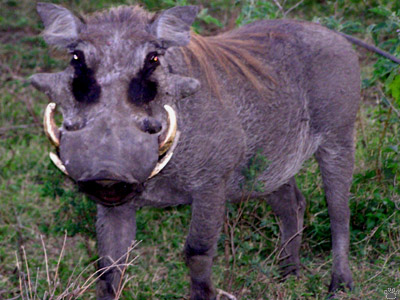
Common warthog (Phacochoerus africanus), Murchison Falls National Park, Uganda.
East Africa - Part 3. Garbage Dumps
One reason traveling biologists often have problems with law enforcement, border guards, the military, and paranoid civilians is that we engage in a lot of suspicious activities. Driving around late at night in search of snakes, looking into abandoned buildings and military installations for bat colonies, snorkeling in swamps, climbing trees and descending into caves - all this looks like something terrorism- or espionage-related to normal people. Yet another weird way of finding wildlife is visiting garbage dumps.
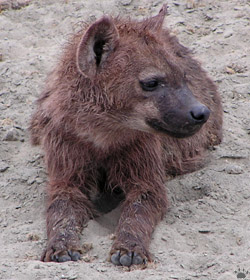 |
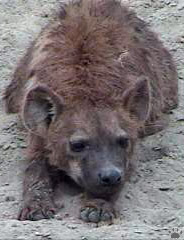
Spotted hyena (Crocuta crocuta),
Ngorongoro Conservation Area,
Tanzania. |
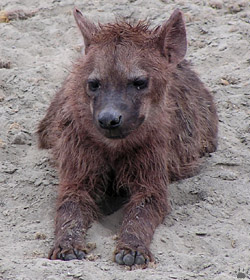 |
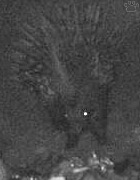
Porcupine approaching a dump... |
Many African parks and reserves have open-pit garbage dumps, which attract a surprising variety of animals, from ants to lions. Among the regulars are spotted hyenas, crested porcupines (Hystrix cristata), and bush pigs (Potamochoerus larvatus). It's a secret world where everybody has his own rules and schedule. For example, the dump in Murchison Falls National Park gets visited by hyenas only after fishing boats return from a trip, and bring fish scraps. Shy porcupines always wait for complete darkness, and show up at least half an hour later than bushpigs, who often appear as soon as the sun sets. |
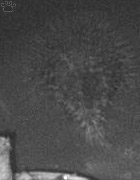
...and leaving it. Ngorongoro. |
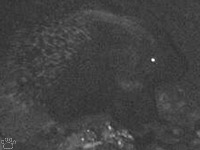 |
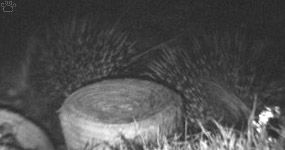 |
 |
| Porcupines at a campground dump, Ngorongoro. |
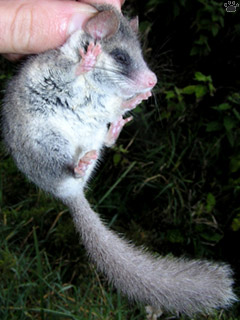
Common African dormouse (G. murinus),
Aberdare National Park, Kenya. |
In places like Ngorongoro Crater rim, Seronera area, or Queen Elizabeth National Park headquarters, up to twenty species of rodents can be seen at one campground garbage dump. In addition to various rats and mice, there can be dormice, gerbils, coipu-like can rats, tree squirrels, ground squirrels, molerats, and, of course, porcupines. In rainforest parks such as Uzambara Mountains Forest Reserve, giant Cricetomys rats, up to 1 m long, can sometimes be seen. Other small mammals include shrews and hedgehogs. |
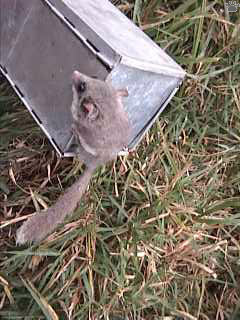
Lesser African dormouse (G. parvus),
Buffalo Springs Game Reserve, Kenya. |
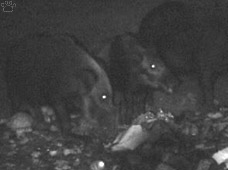 |
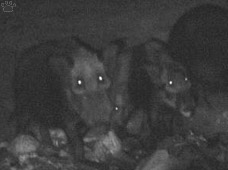 |
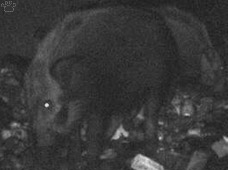 |
| Bush pigs at a campground dump, Ngorongoro. |
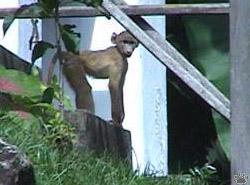
Teenage yellow baboon (Papio cynocephalus)
looking for fun
around an abandoned house.
Uzambara Mts. Forest Reserve, Tanzania. |
At dawn, nocturnal scavangers leave, and a new shift arrives. Many African dumps are dominated by baboons during daylight hours. Some suburban populations have been living exclusively on garbage for many generations. Surprisingly, most of them look reasonably healthy. Sometimes they get into fights with feral dogs. |
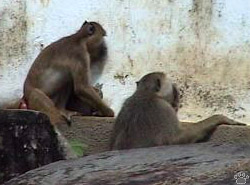
Baboons can sometimes be seen licking whitewashed walls
of old buildings, probably trying to get some calcium.
Uzambara Mts. FR. |
 |
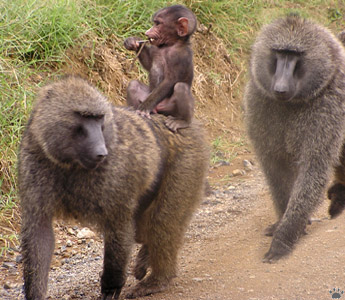 |
| Olive baboons (P. anubis), Lake Manyara National Park, Tanzania. |
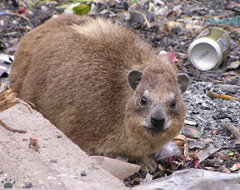
African rock hyrax (Procavia capensis),
Serengeti National Park, Tanzania.
|
Some of the particularly interesting daytime visitors are hyraxes (up to three species at different locations) and mongooses. Many diurnal species of mongooses are highly social: banded mongooses (Mungos mungo), for example, move around in tribal groups of up to 50 individuals. These streams of agile animals are fascinating to watch. |
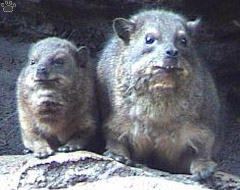
Eastern bush hyrax (Heterohyrax brucei),
Hell's Gate National Park, Kenya.
|
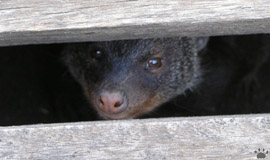
In Queen Elizabeth National Park, Uganda, banded mongooses
have a den under a boardwalk near the visitor center. |
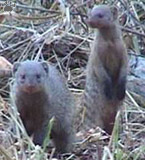
Adults are always watching for
possible danger to cubs. |
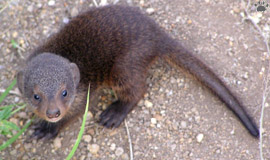
Cubs are raised by the entire tribe. They soon begin following the
adults around, but hide if there is any danger. |
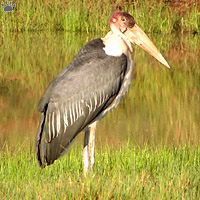
Marabou stork (Leptoptilos crumeniferos),
Entebbe, Uganda. |
It is difficult to estimate how many bird species visit garbage dumps of East Africa (probably more than a hundred), but marabou storks are the most formidable. They can be dangerous not only for a baby mongoose, but even for a small dog. They now nest in many African cities, and are much easier to see in Kampala or Nairobi than in most National parks. They successfully compete with vultures, kites, and other birds of prey that frequent landfills, dumps, and garbage-covered streets. |
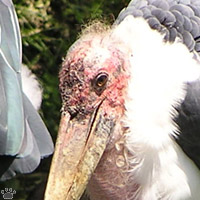
Marabous are smart, observant, and highly
adaptable. Nairobi, Kenya. |
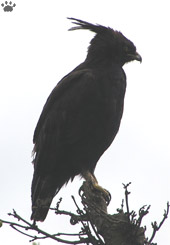 |
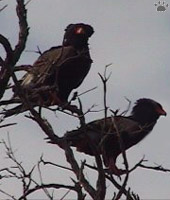 |
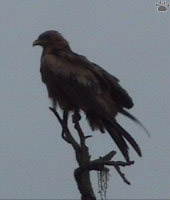 |
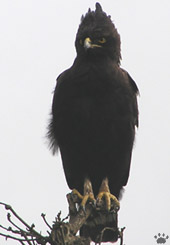 |
| East African birds of prey: long-crested eagle (Lophoaetus occipitalis, two outer images), a pair of bateleurs (Teratopius ecaudatus), black kite (Milvus migrans). Masai Mara National Reserve, Kenya. |
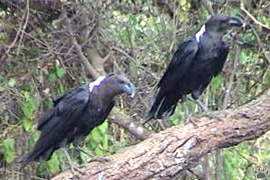
White-naped ravens (Corvus albicollis), Ngorongoro. |
White-naped raven is the largest and the most impressive of the seven species of East African corvids. It is most common in rocky areas, and even breeds in the crater of Nyiragongo Volcano at 3470 m above sea level. |
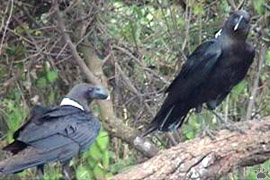
White-naped ravens, Ngorongoro. |
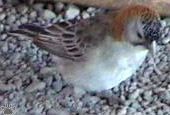 |
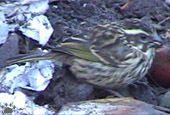 |
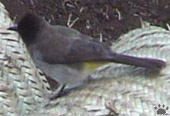 |
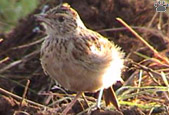 |
 |
|
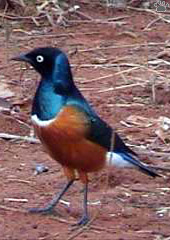 |
| Birds of Ngorongoro garbage dumps, upper row, left to right: speckle-fronted weaver (Sporopipes frontalis), stripe-breasted seedeater (Serinus striatipectus), common bulbul (Pycnonotus barbatus), red-winged lark (Mirafra hypermetra); bottom row, larger photos - superb starling (Lamprotornis superbus), smaller photos - baglafecht weaver (Ploceus baglafecht), male and female, rufous-naped lark (M. africana); bottom row, larger photos - hadada ibis (Bostrychia hagedash), smaller photos - speckled mousebirds (Colius striatus) and Hildebrandt's francolin (Francolinus hildebrandti). |
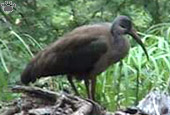 |
|
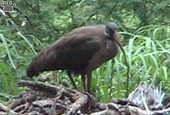 |
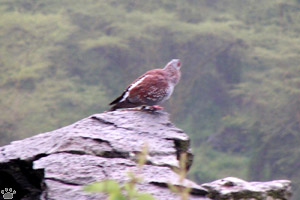
Speckled pigeon (Columba guinea) is a bird of rocky cliffs, but it has
successfully colonized many African cities. Lake Nakuru NP, Kenya. |
As you can see, spending a night in a garbage dump is not always a bad idea. Especially if the dump is in a good place, and there is enough moonlight. |

Giant forest hog (Hylochoerus meinertzhageni) is a rare visitor to
garbage dumps on Mount Elgon, Kenya. |
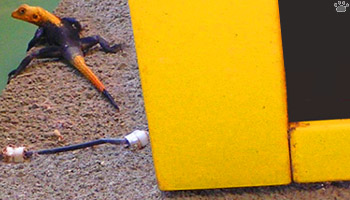
This Agama lizard lives in a telephone booth with matching color scheme. Murchison Falls.
Part 4: Assorted Photos
Back to Part 2
Home
|